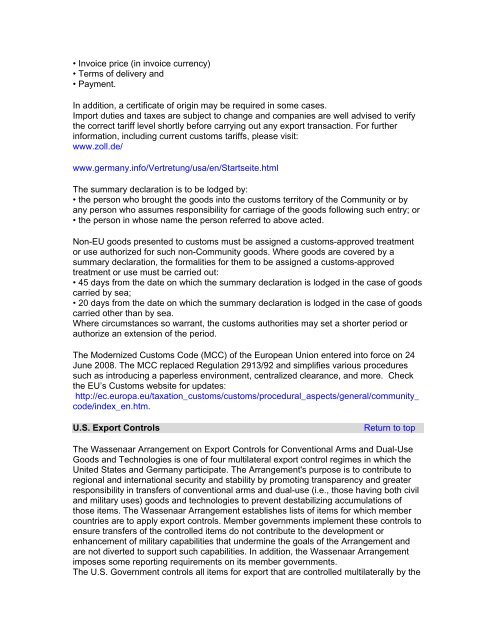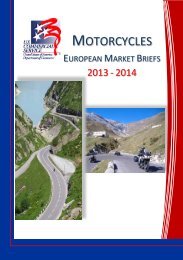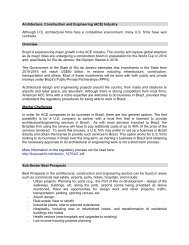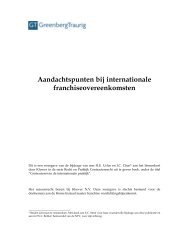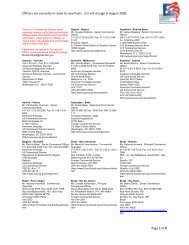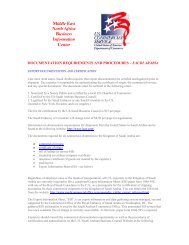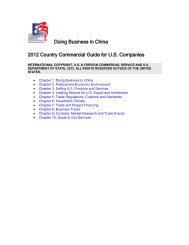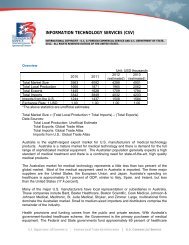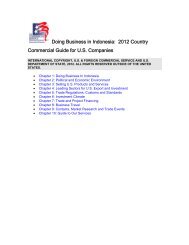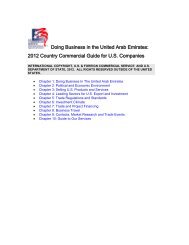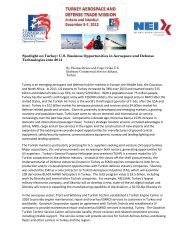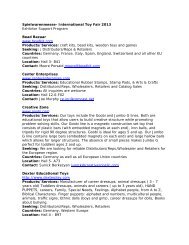Doing Business In Germany: A Country Commercial ... - Export.gov
Doing Business In Germany: A Country Commercial ... - Export.gov
Doing Business In Germany: A Country Commercial ... - Export.gov
You also want an ePaper? Increase the reach of your titles
YUMPU automatically turns print PDFs into web optimized ePapers that Google loves.
• <strong>In</strong>voice price (in invoice currency)<br />
• Terms of delivery and<br />
• Payment.<br />
<strong>In</strong> addition, a certificate of origin may be required in some cases.<br />
Import duties and taxes are subject to change and companies are well advised to verify<br />
the correct tariff level shortly before carrying out any export transaction. For further<br />
information, including current customs tariffs, please visit:<br />
www.zoll.de/<br />
www.germany.info/Vertretung/usa/en/Startseite.html<br />
The summary declaration is to be lodged by:<br />
• the person who brought the goods into the customs territory of the Community or by<br />
any person who assumes responsibility for carriage of the goods following such entry; or<br />
• the person in whose name the person referred to above acted.<br />
Non-EU goods presented to customs must be assigned a customs-approved treatment<br />
or use authorized for such non-Community goods. Where goods are covered by a<br />
summary declaration, the formalities for them to be assigned a customs-approved<br />
treatment or use must be carried out:<br />
• 45 days from the date on which the summary declaration is lodged in the case of goods<br />
carried by sea;<br />
• 20 days from the date on which the summary declaration is lodged in the case of goods<br />
carried other than by sea.<br />
Where circumstances so warrant, the customs authorities may set a shorter period or<br />
authorize an extension of the period.<br />
The Modernized Customs Code (MCC) of the European Union entered into force on 24<br />
June 2008. The MCC replaced Regulation 2913/92 and simplifies various procedures<br />
such as introducing a paperless environment, centralized clearance, and more. Check<br />
the EU’s Customs website for updates:<br />
http://ec.europa.eu/taxation_customs/customs/procedural_aspects/general/community_<br />
code/index_en.htm.<br />
U.S. <strong>Export</strong> Controls Return to top<br />
The Wassenaar Arrangement on <strong>Export</strong> Controls for Conventional Arms and Dual-Use<br />
Goods and Technologies is one of four multilateral export control regimes in which the<br />
United States and <strong>Germany</strong> participate. The Arrangement's purpose is to contribute to<br />
regional and international security and stability by promoting transparency and greater<br />
responsibility in transfers of conventional arms and dual-use (i.e., those having both civil<br />
and military uses) goods and technologies to prevent destabilizing accumulations of<br />
those items. The Wassenaar Arrangement establishes lists of items for which member<br />
countries are to apply export controls. Member <strong>gov</strong>ernments implement these controls to<br />
ensure transfers of the controlled items do not contribute to the development or<br />
enhancement of military capabilities that undermine the goals of the Arrangement and<br />
are not diverted to support such capabilities. <strong>In</strong> addition, the Wassenaar Arrangement<br />
imposes some reporting requirements on its member <strong>gov</strong>ernments.<br />
The U.S. Government controls all items for export that are controlled multilaterally by the


